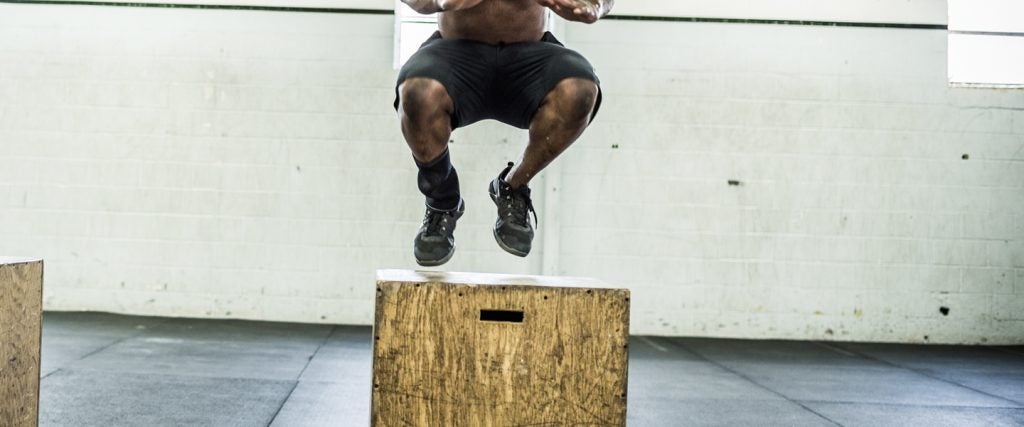What I’m about to say is blasphemy within the four tire-and-sledgehammer cluttered walls of your CrossFit box, but I hope that you’ll stop doing improper pull-ups long enough to hear me out: There’s no reason for you to ever engage in box jumps.
Shhhhhhhhhhhhhh! I’m in the CrossFit box RIGHT NOW, and I think you might get me killed.
Okay, understood. Let me bring things down a notch and discuss what the advertised benefits of box jumps are first.
Principally, the box jump is intended to challenge the muscles directly involved in the jumping motion while adding explosiveness to them. This includes the quads, glutes, hamstrings and calves. On top of that — and potentially more importantly for our present discussion — the box jump trains you to time the movement of your feet to clear an obstacle that you’re leaping over, or intending to land on top of.
So what’s wrong with that?
If you’re training to be a track-and-field athlete, nothing. But if bounding over obstacles isn’t a crucial component of your favorite hobby or your profession — like a mailman who has to leap over fences to escape snarling rottweilers — the box jump is both superfluous and dangerous when compared with its alternatives.
Start by asking yourself these questions: Why is it necessary for you to leap to the highest point you can reach from the ground, plant your feet squarely at that height and then stand up? Wouldn’t the same propulsive force be generated by, for example, repeatedly jumping while attempting to touch a point high off the ground, like the rim of a basketball hoop?
If so, wouldn’t it be logical to think that an exercise requiring you to jump high into the air, raise your feet to a level where they can reach the top of a box and perform a partial bodyweight squat before you drop to the floor, is wholly unnecessary?
Why are you picking on box jumps?
I’m gonna set aside for a moment that the amount of propulsive vertical force you can generate and your ability to raise your feet to a minimum height after your body is airborne are actually two different skills, and that the latter is dependent on joint length and flexibility just as much as the distance from the floor the body can reach.
Studies evaluating the efficacy of box jumps with respect to boosting jumping ability have generally demonstrated that raising the height of the boxes being ascended doesn’t do much. Again, this makes sense, because jumping high and elevating your legs and feet are disparate actions, and a jump of maximum effort is the same whether you’re landing on an elevated box, or right back on the floor where you started from.
Of course, you can’t have people jumping in place during a CrossFit competition, so they need to have a physical box there for the sake of the “sport.”
How else can I train my legs that will improve my jumping power?
A bunch of different ways. For starters, repeatedly jumping as high as you can from the floor — with or without additional weight bearing down on you — and then landing back down on the floor is every bit as beneficial as box jumping, and astronomically safer. Squatting is also a proven hack for unlocking additional leaping abilities, and studies have demonstrated that those who regularly train with squats develop the necessary athleticism to launch themselves higher off the ground.
But even then, when does an adult human ever need to bound around like a jackrabbit? Maybe when “Jump Around” plays during a college football game, or perhaps when you’re leaping from a diving board to impress all onlookers with your legendary cannonballing skills. Aside from that, very few of the most popular sports for grown-ups — golf, bowling, rec league softball, etc. — require a great deal of explosive leg training, let alone replication of the training methods of collegiate high jumpers.
So do yourself a favor and repurpose those boxes to help yourself snag objects from the high shelves in the kitchen cupboard. After all, that box is there as a step to help you prevent injuries, not cause them.

